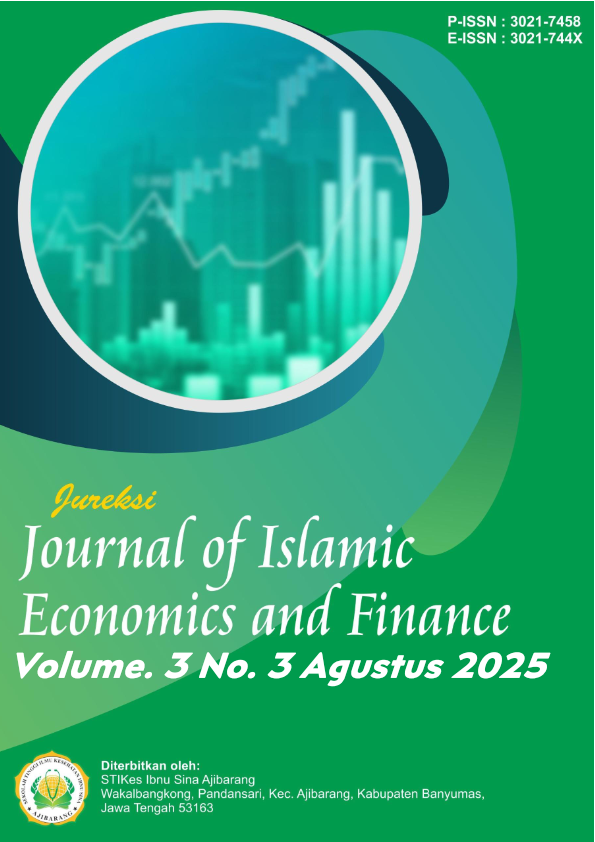International Business Finance : Multinational Corporation
DOI:
https://doi.org/10.59841/jureksi.v3i3.2980Keywords:
Financial Markets, Globalization, International Expansion, Multinational Enterprises, Product MarketsAbstract
This study examines the role of multinational corporations (MNCs) in the context of international business finance, focusing on the reasons for overseas expansion and the globalization of financial products and markets. The discussion includes strategic, operational, and financial motivations that drive companies to expand internationally. In addition, this study analyzes the impact of global financial market integration on MNCs' cross-border activities. The study concludes that global expansion and market globalization provide MNCs with opportunities to increase efficiency, reach new markets, and manage risk more optimally in an interconnected economy.
References
ASEAN. (2020). Digital integration framework action plan 2019–2025. https://asean.org
Ball, D., Geringer, M., Minor, M., & McNett, J. (2020). International business: The challenge of global competition (14th ed.). McGraw-Hill Education.
Bank Indonesia. (2023). Stabilitas sistem keuangan: Laporan triwulan IV. https://www.bi.go.id/id/publikasi
Bloomberg Intelligence. (2024). Outlook on multinational tech expansion in Asia Pacific.
Buckley, P. J., & Casson, M. (2009). The internalisation theory of the multinational enterprise: A review of the progress of a research agenda after 30 years. Journal of International Business Studies, 40(9), 1563–1580. https://doi.org/10.1057/jibs.2009.49
Cavusgil, S. T., Knight, G., Riesenberger, J. R., Rammal, H. G., & Rose, E. L. (2021). International business (3rd Asia-Pacific ed.). Pearson.
Dunning, J. H. (1980). Toward an eclectic theory of international production: Some empirical tests. Journal of International Business Studies, 11(1), 9–31. https://doi.org/10.1057/palgrave.jibs.8490593
Dunning, J. H. (2000). The eclectic paradigm as an envelope for economic and business theories of MNE activity. International Business Review, 9(2), 163–190.
Hill, C. W. L., & Hult, G. T. M. (2019). International business: Competing in the global marketplace (12th ed.). McGraw-Hill Education.
Hofstede, G. (2011). Dimensionalizing cultures: The Hofstede model in context. Online Readings in Psychology and Culture, 2(1). https://doi.org/10.9707/2307-0919.1014
Levitt, T. (1983). The globalization of markets. Harvard Business Review, 61(3), 92–102.
McKinsey & Company. (2022). The state of AI in Southeast Asia. https://www.mckinsey.com
Moffett, M. H., Stonehill, A. I., & Eiteman, D. K. (2020). Fundamentals of multinational finance (6th ed.). Pearson Education.
OECD. (2021). FDI in figures: Trends and data. https://www.oecd.org/investment/statistics.htm
PwC. (2021). Global FinTech report. https://www.pwc.com
Rugman, A. M., & Verbeke, A. (2001). Location, competitiveness, and the multinational enterprise. Oxford Handbook of International Business, 2(1), 150–177.
Shapiro, A. C., & Balbirer, S. D. (2021). Multinational financial management (11th ed.). Wiley.
UNCTAD. (2022). World investment report 2022: International tax reforms and sustainable investment. United Nations. https://unctad.org/wir2022
Wild, J. J., Wild, K. L., & Han, J. C. Y. (2022). International business (9th ed.). Pearson.
World Bank. (2023). World development report 2023: Migrants, refugees, and societies. https://www.worldbank.org/en/publication/wdr2023
Downloads
Published
How to Cite
Issue
Section
License
Copyright (c) 2025 Journal of Islamic Economics and Finance

This work is licensed under a Creative Commons Attribution-ShareAlike 4.0 International License.








